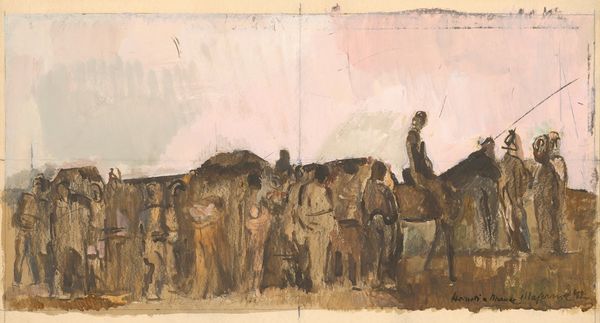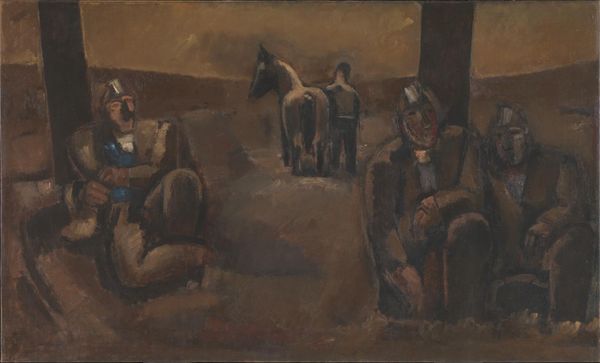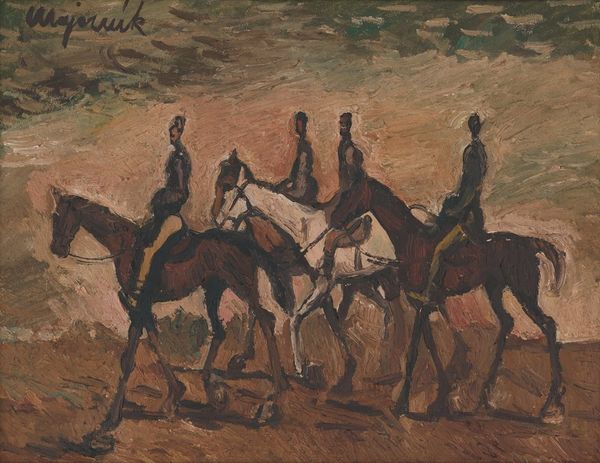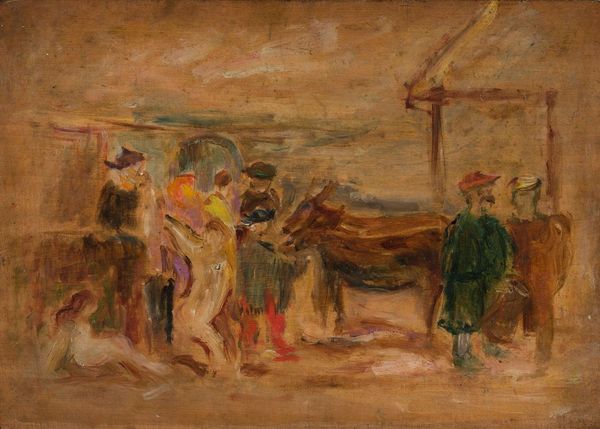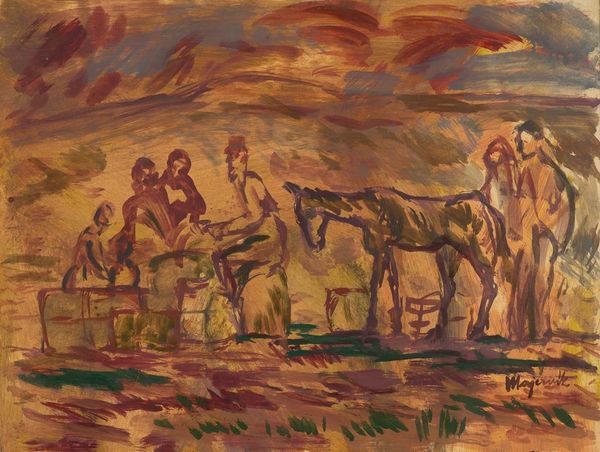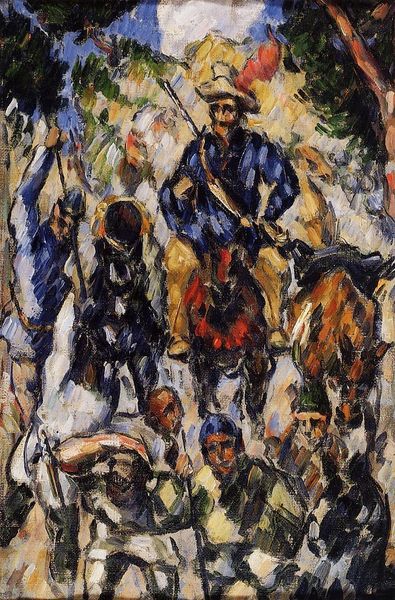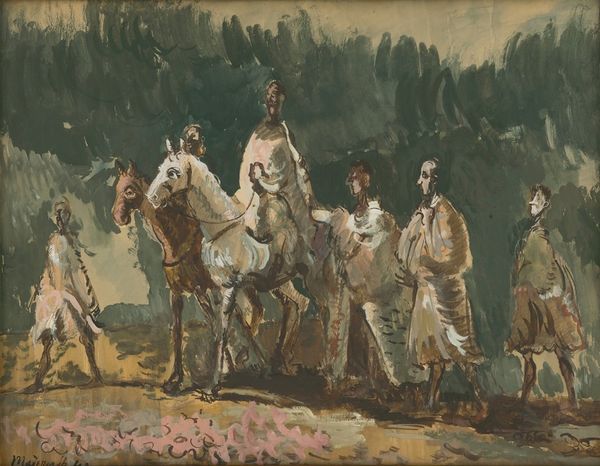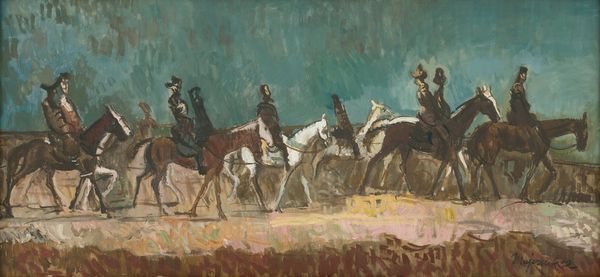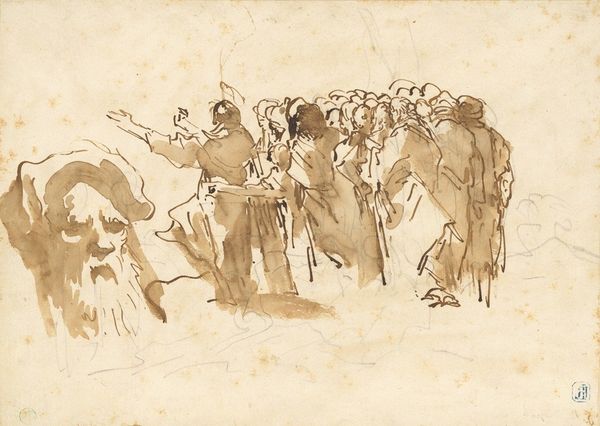
Copyright: Public Domain: Artvee
Editor: So, this is Cyprián Majerník’s "Exiles," painted in 1943. It's an oil painting, and the muted colors really give it this… heavy, somber feel. Looking at these figures huddled together, there’s a real sense of displacement. What do you see in this piece, beyond the surface? Curator: Displacement indeed. It feels like looking at ghosts, doesn't it? This isn't just paint on canvas; it's a lament, a visceral reaction to the turmoil of wartime Europe. Majerník, holed up in Slovakia during the Nazi occupation, funneled all that anxiety, that fear of the unknown, onto the canvas. That's why you have these indistinct figures, almost blending into the landscape. Have you noticed how their faces are obscured, as if robbed of their identities? Editor: Yes, the lack of distinct features is striking. It makes them seem universal, like they could be anyone, anywhere, suffering the same fate. Is that what Majerník was going for, do you think? Curator: Absolutely! The genius of it lies in that very universality. This wasn't about one specific group of exiles; it's about the shared human experience of loss and forced migration. Notice the muted tones— browns and ochres—it strips away any romanticism, offering us a raw, almost brutal truth. What story do you imagine for them? Editor: I picture them moving through a war-torn landscape. Uncertain of their final destination or reception. You've given me a lot to consider about its universal theme. Curator: And I must consider how to think beyond themes to experiences. I'm not sure the painting evokes this in me as much as it conveys the artist's intent, something a little more intellectual. Food for thought.
Comments
No comments
Be the first to comment and join the conversation on the ultimate creative platform.
